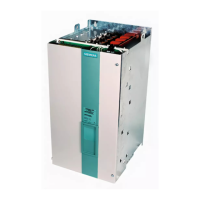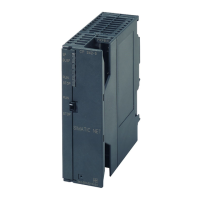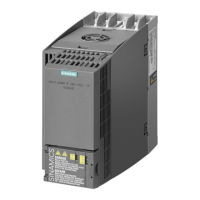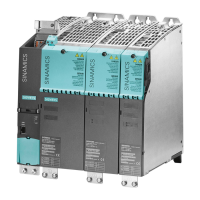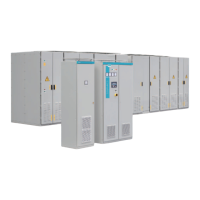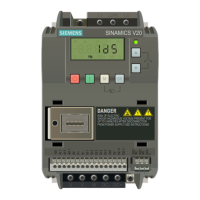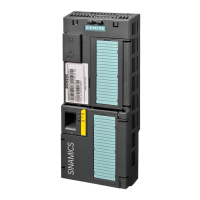Configuration
3.3 Dimensioning
The maximum motor torque is then verified using the motor limiting curves.
The following criteria must be taken into account when selecting the motor:
• The dynamic limits must be observed, i.e., all speed-torque points of the load must lie
below the relevant limiting curve.
• The thermal limits must be observed, i.e. for synchronous motors, the rms motor torque at
the average motor speed resulting from the load duty cycle must lie below the S1 curve
(continuous duty). For induction motors, the rms value of the motor current within a load
duty cycle must be less than the rated motor current.
• For synchronous motors it should be observed that the maximum permissible motor
torque is reduced at higher speeds as a result of the voltage limiting curve. In addition, a
clearance of 10% from the voltage limiting curve should be observed to safeguard against
voltage fluctuations.
• When using induction motors, the permissible motor torque in the field weakening range
is reduced as a result of the stability limit. A clearance of 30% should be observed.
• When using an absolute encoder, the rated torque of the motor is reduced by 10% due to
the thermal limits of the encoder.
Load duty cycles with constant on period
For load duty cycles with constant on period, specific requirements are placed on the torque
characteristic as a function of the speed,
e.g. M = constant, M ~ n
2
, M ~ n or P = constant.
These drives typically operate at a specific operating point. Drives such as these are
dimensioned for a base load. The base load torque must lie below the S1 curve.
In the event of transient overloads (e.g. when accelerating) an overload has to be taken into
consideration. The peak torque must lie below the voltage limiting curve for synchronous
motors or below the stability limit for induction motors.
In summary, the motor is selected as follows:
General Section for Synchronous Motors
Configuration Manual, (PJAL), 11.2005 Edition, 6SN1 197-0AD07-0BP4
3-7

